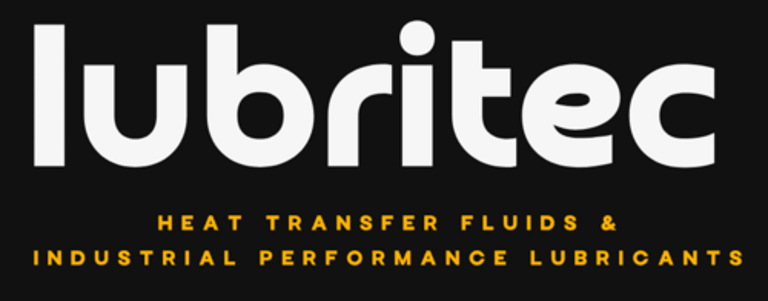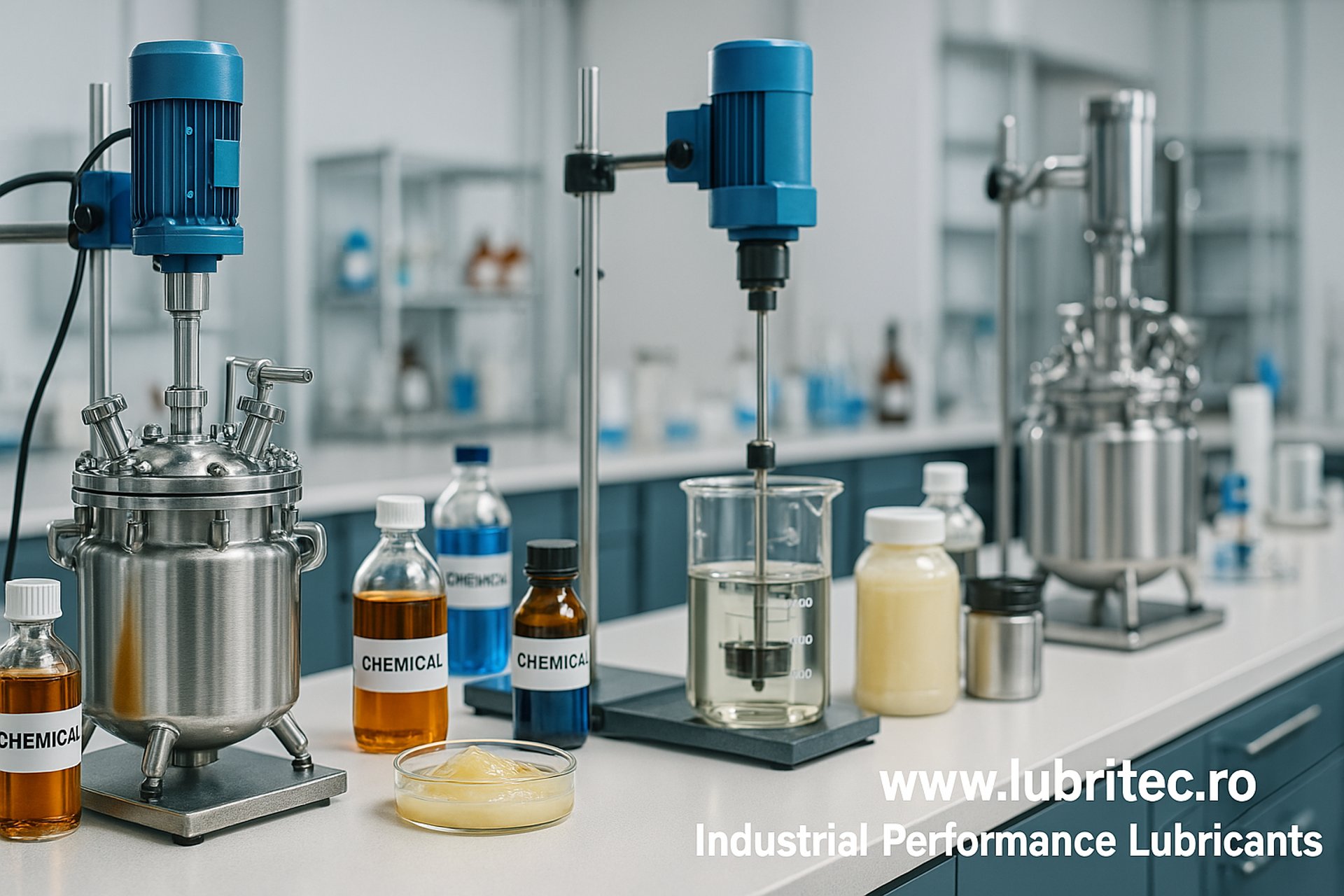
Lubritec
Your Local Partner for
Premium Heat Transfer Fluids and Industrial Performance Lubricants
Selecting the Right Lubricating Grease
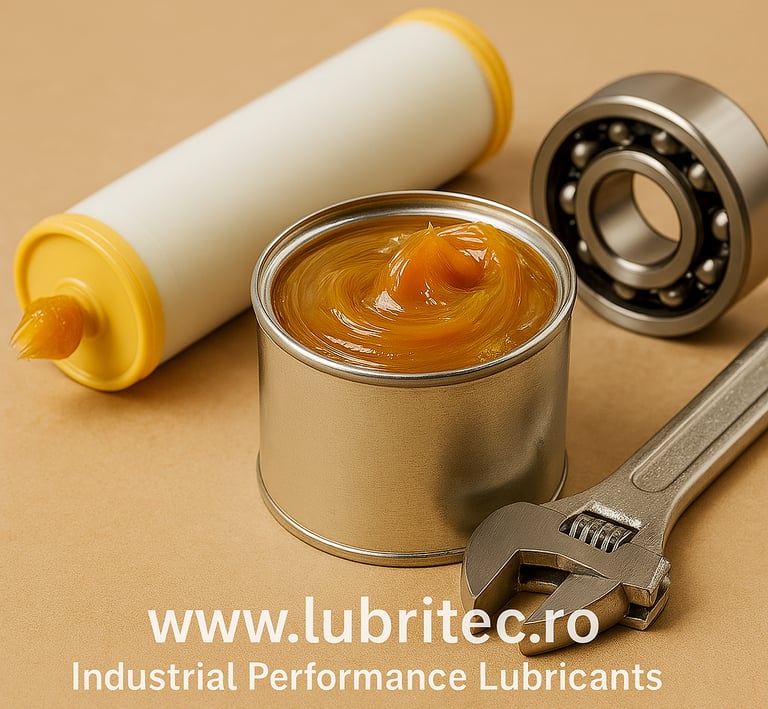

Before choosing the appropriate lubricating grease for a specific application, it is essential to clearly define the operating conditions and performance requirements. These factors play a crucial role in ensuring optimal functionality, safety, and cost-efficiency of machinery.
Key Parameters to Evaluate:
Indoor or outdoor operation
Operating temperature range
Oil separation and evaporation rate
Load and speed requirements
Wear protection and friction reduction
Compatibility with seals and elastomers
Resistance to chemicals or water
Re-lubrication intervals
Food-grade or H1 compliance (if applicable)
Cost-effectiveness
Advanced lubrication technologies
Choosing the appropriate lubricating grease is crucial for ensuring optimal performance, longevity, and reliability of machinery components. This guide provides an in-depth look at the key factors to consider when selecting the right grease for your applications.
Parameters to Evaluate:
Application Environment:
Is the equipment operating indoors or outdoors? Exposure to moisture, dust, or aggressive chemicals can greatly influence grease performance.Temperature Range:
Assess both low and high-temperature performance, ensuring the grease maintains consistency and lubricity throughout the operating spectrum.Evaporation and Consumption:
Choose greases with low evaporative loss, low oil bleed, and minimal re-greasing intervals to reduce consumption and maintenance costs.Friction and Wear Protection:
Look for formulations with advanced additives to reduce friction, minimize wear, and enhance the mechanical life of moving components.Energy Efficiency:
A properly selected grease can help improve operational efficiency by reducing torque and power loss.Chemical Compatibility:
Greases must be chemically stable and compatible with seals, elastomers, and surrounding materials to avoid premature failures.Lubrication Interval and Service Life:
Evaluate the potential for extended drain intervals to reduce downtime and operating costs.Special Certifications:
In food, pharmaceutical, or cleanroom environments, select greases with NSF H1 registration or other required certifications.Total Cost of Ownership:
Don’t evaluate based on grease cost alone — consider long-term performance, reliability, and re-lubrication frequency.Innovation & Advanced Technologies:
Take advantage of modern lubricant technologies (e.g., synthetic base oils, nano-additives, or solid lubricants like PTFE) for superior performance under extreme conditions.
Understanding Grease Composition
Lubricating grease is a semi-solid lubricant composed of three primary components:
Base Oil (70-90%): Provides the primary lubricating properties.
Thickener (5-15%): Gives grease its consistency and helps retain the base oil.
Additives (0-10%): Enhance specific properties such as oxidation resistance, corrosion protection, and load-carrying capacity.
The selection of each component influences the grease's performance characteristics, including temperature tolerance, water resistance, and mechanical stability.
Key Selection Criteria
Operating Temperature Range
Choose a grease that performs reliably within your system’s temperature extremes—consider cold start-up behavior and thermal stability at high temperatures.Load Conditions
The grease must be suitable for the type of load encountered—whether light, medium, or extreme pressure—to ensure adequate film strength and protection.Speed Factor (DN Value)
The DN value (bearing diameter × RPM) influences grease viscosity and consistency requirements—higher speeds demand lower-viscosity greases with better flow characteristics.Environmental Exposure
Exposure to water, steam, chemicals, dust, or vacuum demands specialized grease formulations offering water resistance, inertness, or sealing effects.Material Compatibility
Ensure the grease is compatible with materials in contact—such as seals, plastics, and elastomers—to avoid swelling, degradation, or leakage.Friction and Wear Protection
Select greases that reduce metal-to-metal contact through additives like MoS₂ or solid lubricants, improving efficiency and extending component life.Oxidation and Ageing Resistance
Antioxidant-enriched greases maintain stability and resist breakdown over time, which helps in extending relubrication intervals and reducing downtime.Water Resistance
In wet, humid, or washdown environments, greases with enhanced water washout resistance and rust inhibitors are essential.Corrosion Protection
Look for greases containing corrosion inhibitors, especially when components operate in marine, coastal, or outdoor applications.Food-Grade Requirements (H1, NSF)
For the food, beverage, and pharmaceutical industries, use NSF H1-registered greases that are safe for incidental food contact.Relubrication Interval & Service Life
Greases designed for long life reduce maintenance frequency and are ideal for sealed-for-life or difficult-to-access equipment.Application Method
Consider how the grease is applied—some are formulated for central lubrication systems, others for manual greasing or automatic dispensers.Thickener Type
Thickener systems (e.g., lithium complex, calcium sulfonate, polyurea, aluminum complex, PTFE) impact temperature resistance, water stability, and mechanical properties.Base Oil Type
Greases based on mineral oils are cost-effective for standard applications, while synthetic base oils (e.g., PAO, ester, silicone) offer superior performance under extreme conditions.
Common Grease Thickener Types and Their Applications
Lithium (Li) Grease
Excellent general-purpose grease with good mechanical stability, water resistance, and temperature tolerance.
Typical Applications: Bearings, chassis lubrication, electric motors.
Lithium Complex (LiX) Grease
Improved thermal and mechanical stability over standard lithium grease, with high dropping point.
Typical Applications: Automotive wheel bearings, heavy-duty industrial machinery.
Calcium (Ca) Grease
Good water resistance and rust protection, limited high-temperature capabilities.
Typical Applications: Marine equipment, agricultural machinery, low-speed bearings.
Calcium Complex Grease
Higher dropping point than traditional calcium greases with excellent water and corrosion resistance.
Typical Applications: Food processing (H1 approved), off-road machinery, wet environments.
Aluminum Complex Grease
High water resistance, oxidation stability, and good load-carrying capacity. Common in food-grade formulations.
Typical Applications: Food and beverage industry, pharmaceutical plants, paper mills.
Polyurea Grease
Excellent oxidation stability and high-temperature resistance. Non-soap thickener, ideal for sealed-for-life applications.
Typical Applications: Electric motors, HVAC fans, automotive alternators.
Clay (Bentonite) Grease
Non-melting grease with exceptional thermal stability but limited pumpability.
Typical Applications: High-temperature bearings, kiln support rollers, oven conveyors.
Silica-Based Grease
Stable across a wide range of temperatures, chemically inert and used in specialty environments.
Typical Applications: Cleanroom environments, precision instruments, aerospace.
PTFE (Polytetrafluoroethylene) Thickened Grease
Excellent chemical resistance, low friction coefficient, suitable for extreme conditions.
Typical Applications: Valves and fittings, chemical processing equipment, pharmaceutical equipment.
Calcium Sulfonate Complex Grease
Naturally resistant to water, corrosion, and oxidation. Excellent EP and anti-wear properties.
Typical Applications: Heavy-duty equipment, marine applications, steel mills.
Barium Complex Grease
High load-carrying capability and chemical resistance, though less common due to toxicity concerns.
Typical Applications: Specialty industrial applications where extreme conditions exist.
Base Oils and Common Viscosities Used in Lubricating Greases
Mineral Oil
The most common and cost-effective base oil. Derived from refined petroleum, suitable for general-purpose applications.
Typical Viscosity: ISO VG 32 – 320 (depending on application)
Applications: Automotive, industrial machinery, general lubrication.
PAO (Polyalphaolefin) Synthetic Oil
Excellent thermal and oxidative stability, wide temperature range, very good low-temperature performance.
Typical Viscosity: ISO VG 32 – 460
Applications: Electric motors, high-speed bearings, aerospace, food-grade greases (H1).
Ester-Based Synthetic Oil
Esthetically and thermally stable with excellent lubricity and biodegradability; higher polarity improves film strength.
Typical Viscosity: ISO VG 15 – 460
Applications: High-temperature applications, biodegradable greases, aerospace, environmentally sensitive areas.
Silicone Oil
Stable over a wide temperature range, highly inert and non-reactive; very low surface tension.
Typical Viscosity: ISO VG 10 – 1000+
Applications: Valves, electrical contacts, O-ring and seal lubrication, plastic-compatible greases.
PFPE (Perfluoropolyether) Oil
Chemically inert and thermally stable; resistant to aggressive chemicals, oxygen, and radiation.
Typical Viscosity: ISO VG 25 – 680
Applications: Vacuum systems, cleanroom, nuclear, pharmaceutical, and semiconductor environments.
Polyalkylene Glycol (PAG) Oil
High viscosity index and excellent thermal properties; good water solubility in some variants.
Typical Viscosity: ISO VG 46 – 320
Applications: Industrial worm gears, applications requiring low traction or compatibility with water-based systems.
White Oil / Medicinal Oil
Highly refined mineral oil, odorless and colorless; used in food-grade or pharmaceutical greases.
Typical Viscosity: ISO VG 32 – 150
Applications: NSF H1 greases, cosmetics, food equipment bearings and slides.
Biodegradable Natural Esters / Synthetic Esters
Environmentally friendly, used in EAL (Environmentally Acceptable Lubricants); good lubricity and renewability.
Typical Viscosity: ISO VG 32 – 100
Applications: Forestry, marine, agriculture, hydropower applications.
NLGI Consistency Grades
(Based on ASTM D217 Penetration Test)
NLGI 000 – Fluid
Penetration: 445–475
Very soft, pourable grease with almost fluid-like behavior.
Used in centralized lubrication systems and gear housings.
NLGI 00 – Semi-Fluid
Penetration: 400–430
Flows easily, offers low internal friction.
Common in enclosed gearboxes, conveyors, and low-speed drives.
NLGI 0 – Very Soft
Penetration: 355–385
Soft consistency, suitable for applications requiring excellent cold-start flow.
Used in electric motor bearings, automatic systems.
NLGI 1 – Soft
Penetration: 310–340
Pumpable and smooth, good for low-temp or long lube lines.
Ideal for centralized systems, low-friction mechanisms.
NLGI 2 – Normal (Standard Grade)
Penetration: 265–295
Most common grease consistency, similar to peanut butter.
Suitable for general-purpose bearing and industrial applications.
NLGI 3 – Firm
Penetration: 220–250
Thicker than standard, resists softening under high thermal loads.
Used in vertical surfaces, high-temp motors, and equipment.
NLGI 4 – Very Firm
Penetration: 175–205
Dense and highly adhesive grease.
Preferred in sealing, shock-load environments, and leakage-critical systems.
NLGI 5 – Hard
Penetration: 130–160
Almost paste-like in density.
Rarely used except in slow-moving, high-pressure mechanical systems.
NLGI 6 – Very Hard
Penetration: 85–115
Extremely stiff grease with waxy or blocky consistency.
Specialized use in lifetime-sealed or vibration-prone assemblies.
Flushing Liquids in the Food Industry
Flushing liquids that are HT1-approved are primarily used before filling the system with the final HT1 thermal oil. This is especially important for new systems in the food industry to ensure any residues from the fitting process are flushed out. Flushing liquids are also used when switching from conventional thermal oils to HT1 oils (e.g., white oils), ensuring a safe and reliable transition.
HT1-approved thermal oils are specifically designed for applications where unintentional contact with food is possible, as certified by organizations like NSF or INS.
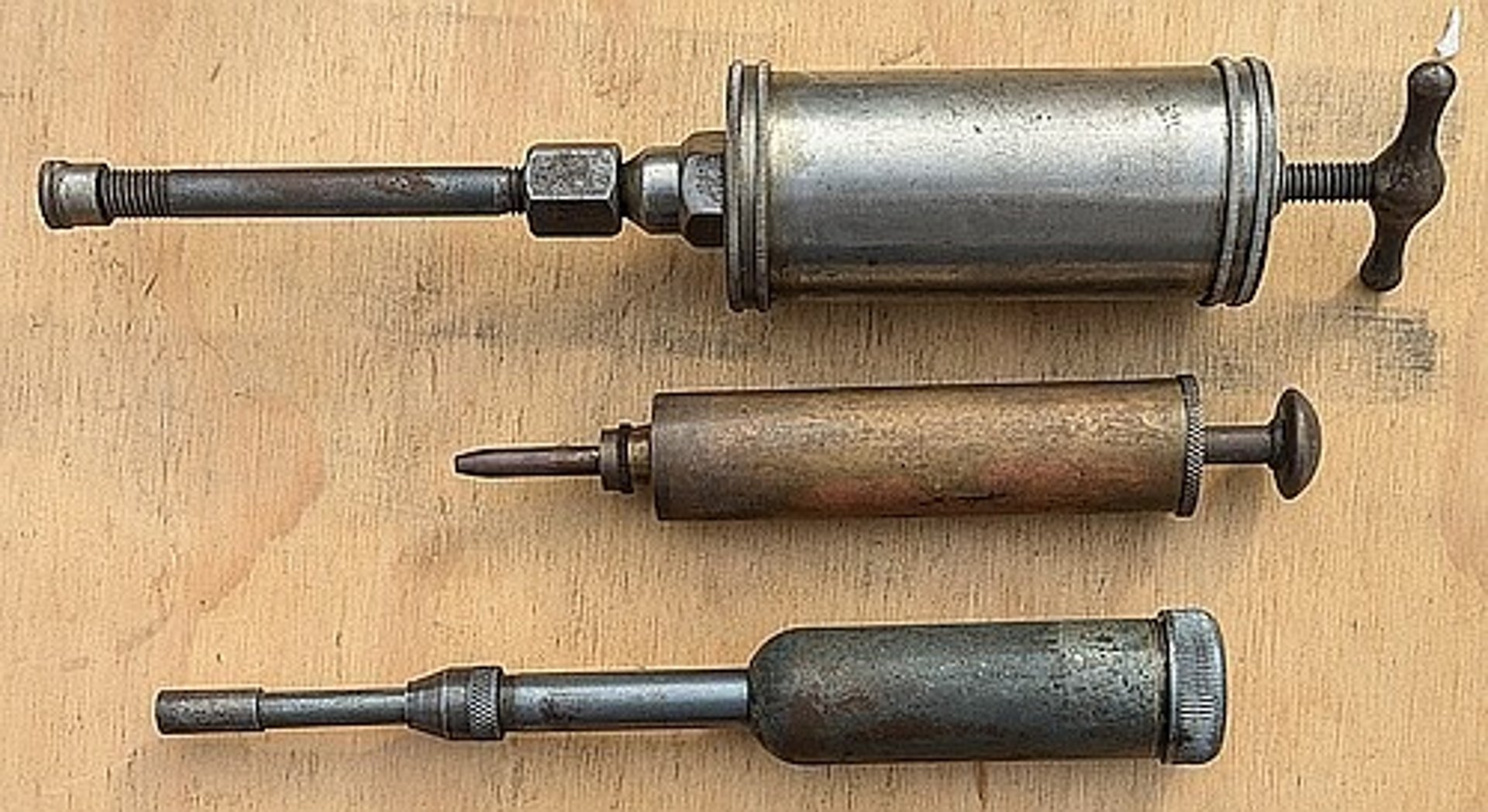
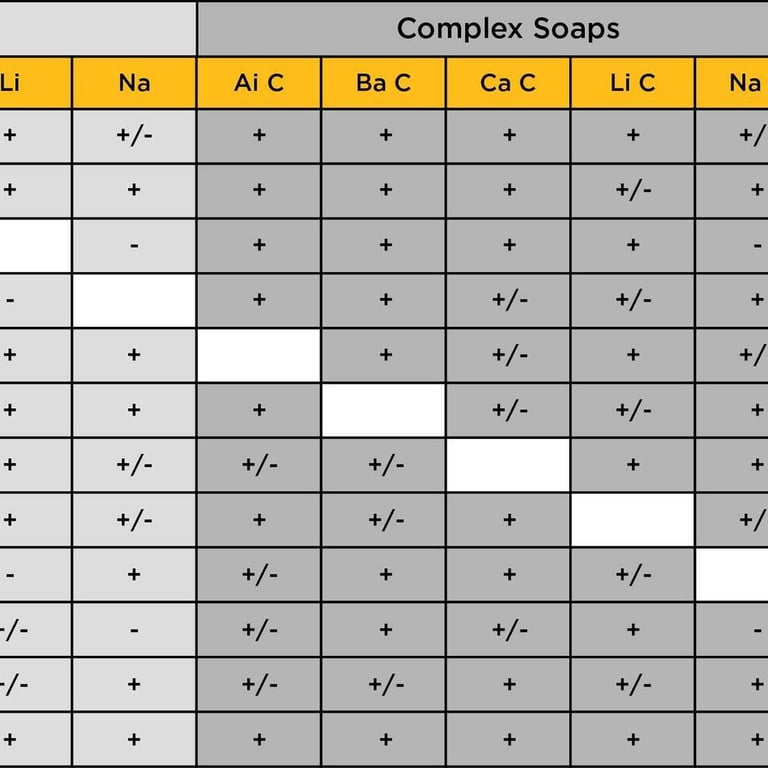
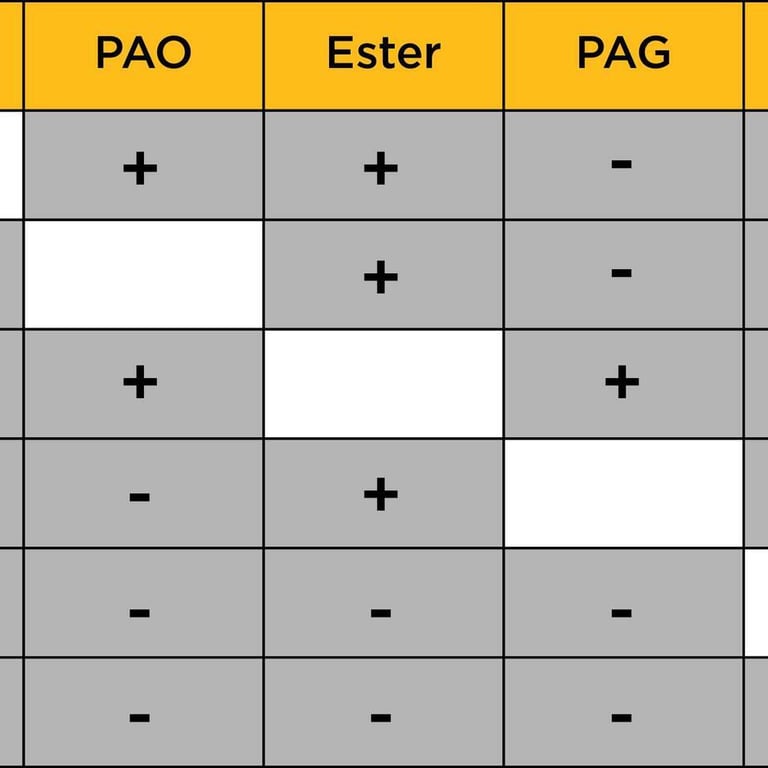
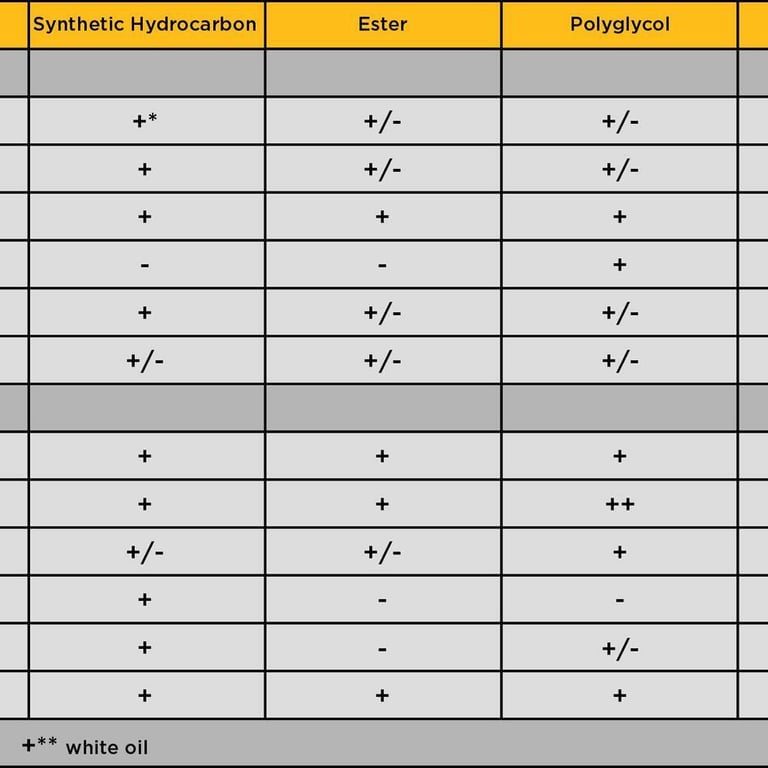
Miscibility Charts
Performance-Engineered Grease Solutions for Specialized Needs
Lubritec greases are available in a wide range of base oils and thickener systems to match specific performance goals:
Temperature range: -60°C up to +280°C (even higher with PFPE and fluorinated oils)
Load tolerance: From micro-precision bearings to high-load, shock-prone machinery
Environmental compliance: Food-grade, biodegradable, and low-toxicity formulations
Extended service intervals: Reduced maintenance in demanding applications
All greases are selected and supported through application-specific evaluation and performance monitoring—ensuring long-term reliability, efficiency, and protection.
Lubricating Grease Applications & Solutions
Lubritec’s lubricating grease solutions are engineered to deliver superior mechanical protection, reduce friction and wear, and extend service intervals across a broad spectrum of industrial conditions. Our portfolio includes advanced greases formulated to ensure compatibility, stability, and efficiency—tailored to the specific challenges of each application.
We provide solutions for:
Bearing Applications
Rolling and plain bearings, high-speed or high-load conditions, extreme temperature environments.
Solutions: high-speed synthetic greases, lithium complex, and polyurea-based greases.
Electric Motors & Sealed-for-Life Units
Low noise, low friction, and long service life.
Oxidation-resistant and low-bleed formulations.
Solutions: polyurea and ester-based greases, advanced synthetic blends.
Open and Enclosed Gears
Applications requiring shock load protection, water resistance, and anti-wear performance.
Solutions: aluminum complex and calcium sulfonate greases with EP additives.
Food and Beverage Industry
Greases certified for incidental food contact (NSF H1, H3).
Formulated with inert, non-toxic components.
Solutions: white oil-based aluminum complex and PAO synthetic greases.
Marine and Offshore Equipment
Saltwater resistance, corrosion protection, and extreme pressure endurance.
Solutions: calcium sulfonate complex greases and biodegradable marine-grade formulations.
Heavy-Duty Off-Highway and Construction Equipment
Designed for harsh conditions, heavy loads, and contamination.
Solutions: lithium complex and barium/calcium sulfonate greases with solid lubricants.
Automotive and Chassis Lubrication
Reliable performance in varied temperatures and high mechanical stress.
Solutions: lithium and lithium complex greases for universal multipurpose use.
Textile, Paper, and Chemical Industries
Exposure to steam, oxidizers, and chemical washdown.
Solutions: synthetic greases with PTFE or bentonite clay thickeners.
Plastic-Compatible and Cleanroom Applications
Safe on sensitive materials, low-volatility, non-reactive.
Solutions: silicone and PFPE-based greases for instrumentation and electronics.
Additional Products for Lubricating Grease Systems
Beyond supplying high-performance lubricating greases, Lubritec also provides a comprehensive range of complementary products and accessories designed to improve the handling, application, and efficiency of grease lubrication systems. These supporting components are engineered to meet the demands of both industrial maintenance and precision lubrication workflows, ensuring clean, reliable, and safe operations.
Grease Handling and Transfer Equipment
Grease Pumps and Dispensers
Pneumatic, electric, and manual grease pumps for clean and efficient transfer from cartridges, drums, or bulk storage.
Available in various ratios and configurations, including systems for high-viscosity greases.
Automatic Lubrication Systems
Centralized lubrication units, single-line, dual-line, or progressive systems for continuous and controlled grease delivery.
Ideal for construction, mining, and process industries with multiple lubrication points.
Metering Valves and Injectors
Precision dosing and distribution of grease to multiple points.
Helps prevent over-lubrication and ensures consistent feed in automated systems.
Storage, Heating & Application Accessories
Drum and Container Heaters
Flexible heating jackets and electric drum base heaters for 20 L, 50 L, and 200 L grease containers.
Maintain grease pumpability and reduce startup delays in cold environments or for high-viscosity greases.
Insulated Covers and Thermal Blankets
For maintaining stable grease temperature during storage or transport in temperature-sensitive applications.
Improves pump efficiency and extends equipment lifespan.
Grease Guns & Fittings
Manual, battery-powered, and pneumatic grease guns with precision nozzles and quick-connect fittings.
Used for controlled lubrication during maintenance routines.
If you require further information or assistance in selecting the appropriate lubricant for your specific application, please feel free to ask.
Your solution is just one step ahead—let’s take it together.
Get in touch with us today.
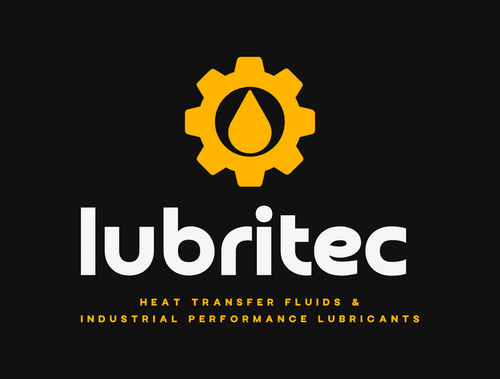

Calitate
Furnizor de încredere de lubrifianți industriali, Lubritec oferă produse de înaltă calitate, provenite de la producători consacrați și testate pentru performanță și fiabilitate în cele mai exigente aplicații industriale.
© 2017 - 2025. All rights reserved.
iNDUSERV FiLTEX srl
Mon-Fri 8:30am - 18:00pm
Soluții de lubrifiere care sporesc eficiența, reduc întreținerea și prelungesc durata de viață a echipamentelor în aplicații solicitante.
Dezvoltare durabilă
Tehnologie inovatoare
Procese de fabricație moderne și îmbunătățiri continue ale produselor în sectorul lubrifianților, inclusiv nano-lubrifianți, sisteme inteligente, opțiuni pe bază biologică, sintetice de înaltă performanță și soluții automatizate




